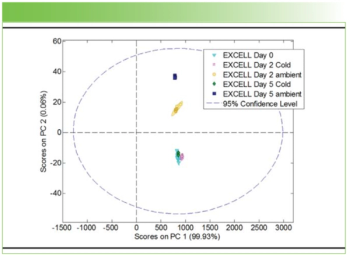
Recent Advances in TERS Imaging of 2D Materials
Webinar Date/Time: Tue, Dec 10, 2024 2:00 PM EST
This webinar will cover exciting advances in tip-enhanced Raman spectroscopy (TERS) characterization of 2D materials, including the following: Excitation wavelength dependence of the gap mode TERS of transition metal dichalcogenides (TMDs); proximity-induced magic Raman bands in TERS spectra of 1-L hexagonal boron nitride (h-BN); TERS-enabled characterization of nanoscale growth defects; and clarification of the composition misconceptions in Janus TMD monolayers.
Register Free:
Event Overview:
In this webinar, a number of exciting developments in the tip-enhanced Raman spectroscopy (TERS) field will be discussed, including non–trivial excitation wavelength dependence of the gap-mode TERS response of transition metal dichalcogenides (TMDs) on silver that resulted in reconsidering the role of resonance effects and strong optical coupling in TERS and completely unexpected discovery of the normally forbidden Raman bands in TERS spectra of the monolayer h-BN on gold caused by the proximity of TMD monolayer to multiple layers exfoliated on top. In addition, the webinar will also have a beautiful demonstration of the power of cross-correlated atomic force microscopy-based tip-enhanced Raman spectroscopy (AFM-TERS) nanoscale imaging for characterization of the nanoscale growth defects in Janus TMD monolayers that will help address misconceptions about the composition of Janus material and outline the strategies for improved synthetic procedures.
Key Learning Objectives:
- Learn about recent advances in TERS imaging and the importance of varied excitation wavelength in TERS characterization of 2D materials.
- Explore new, exciting discoveries in TERS response of monolayer h-BN.
- Understand the power of TERS imaging for characterization of the nanoscale defects in 2D materials.
Who Should Attend:
- Researchers in the field of 2D materials and near-field optics
Speaker
Andrey Krayev
AFM-Raman Product Manager for North America
HORIBA
Andrey Krayev received his graduate degree from the Moscow Institute of Physics and Technology in Moscow, Russia, in 1991. He is actively involved in development of the TERS technique and its implementation for real-world applications.
In 2001, he started to use SPM when he was working as an application scientist for QPT, Inc. He began his role as a CTO at AIST-NT, Inc, in 2008. AIST-NT technology was acquired by HORIBA in 2017. Krayev since then has been the North America AFM-Raman manager for HORIBA Scientific. He continues active development of TERS-related applications for advanced characterization of 2D materials and beyond.
Register Free:
Newsletter
Get essential updates on the latest spectroscopy technologies, regulatory standards, and best practices—subscribe today to Spectroscopy.




